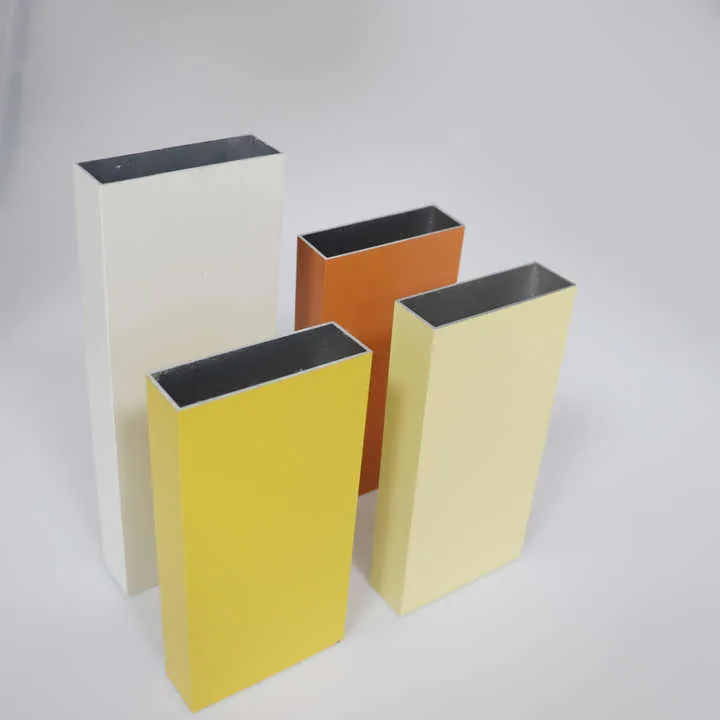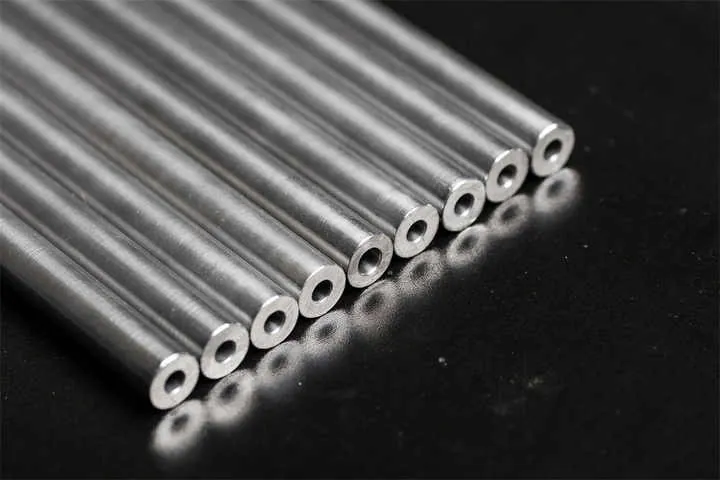What are extruded seamless aluminum tubes used for?

I often start with a problem: when I needed a strong, light tube, I searched far and wide.
Extruded seamless aluminum tubes serve many uses, from structural frames to fluid transport, due to their strength, corrosion resistance, and smooth interior.
These tubes let engineers design without worrying about weld joints that can leak or weaken.
How do they compare to welded tubes?
I once chose between welded and seamless tubes. I felt the stress of picking the right one.
Seamless tubes are stronger and more reliable than welded tubes because they have no weld seam that could crack or corrode.

Strength and integrity
Seamless tubes are drawn from a solid billet. This process yields a continuous grain structure. There is no weld seam. This gives them higher mechanical strength and better fatigue resistance. In contrast, welded tubes are made by bending a sheet or plate and welding the edges. That weld line is a potential weak point. Over time, repeated loading can cause cracks. In critical applications, engineers often favor seamless tubes. Pressure vessels, hydraulic systems, and aerospace structures rely on that strength.
Surface finish and function
A smooth internal surface is key for fluid flow, especially gas or liquid. Seamless tubes have uniform, smooth interiors. Welded tubes often need internal finishing to remove weld bead and smooth out the weld line. That adds cost and time. When you transport gas or use the tube as a structural slide, a smooth internal finish avoids turbulence and wear inside the tube.
Cost and availability
Welded tubes are more economical and widely available, especially in larger diameters. They are enough for many structural uses where high pressure or fatigue loading is not critical. Seamless tubes are costlier and limited in very large sizes. But for tubes up to 400?mm diameter, seamless options exist. The cost difference narrows for high-performance alloys like 6061-T6 or 7075 due to processing overhead on welded tubes to meet those specs.
Corrosion resistance
The weld area in welded tubes can be prone to corrosion if not treated properly. Seamless tubes have the same base material throughout and no weld seam. This uniformity improves corrosion resistance, especially when the alloy is anodized or treated after manufacturing.
Summary table
| Feature | Seamless Tube | Welded Tube |
|---|---|---|
| Strength | High, no weld seam | Lower around weld line |
| Fatigue resistance | Excellent | Requires inspection at weld |
| Surface finish | Smooth inside | Needs extra steps for smoothness |
| Corrosion resistance | Uniform base material | Weld line needs extra coating |
| Cost | Higher | Lower |
| Size availability | Up to ~400?mm OD | Easily up to >1?m OD |
Seamless tubes always cost more than welded tubes.True
Seamless tubes require more complex production, drawing from a billet, which increases cost. Welded tubes are simpler to make and hence generally less expensive.
Welded tubes are stronger than seamless tubes.False
Welded tubes have a seam that creates a weak spot. Seamless tubes have uniform strength through their cross-section.
What size and wall thickness are available?
I often get asked: can I get a tiny tube or an extra-thick wall for this build?
Seamless aluminum tubes range from small diameters (10?mm) to large (400?mm), with wall thickness from about 1?mm to over 25?mm, meeting varied design needs.

When I specify tube size, I think about outer diameter (OD) and wall thickness (WT). Manufacturers offer a wide range:
- Small OD: from 10?mm to 50?mm, wall thickness 1–5?mm
- Medium OD: 50?mm to 200?mm, wall thickness 2–15?mm
- Large OD: 200?mm to 400?mm, wall thickness 3–25?mm
These sizes depend on alloy, extrusion press capacity, and billet size. Common alloys include 6063, 6061, and 6082.
Typical size vs. application
| OD Range | Wall Thickness | Use Cases |
|---|---|---|
| 10–50?mm | 1–5?mm | Precision parts, medical equipment, bikes |
| 50–200?mm | 2–15?mm | Structural components, frames, hydraulics |
| 200–400?mm | 3–25?mm | Pressure vessels, large construction |
Some industries need custom sizes. I once made tubes with 400?mm OD and 25?mm wall for large hydraulic cylinders. That required special extrusion and drawing steps. When customers order, they must specify OD, ID, WT, and sometimes the weight per meter. This helps estimate strength and cost.
Seamless tubes are only available below 200?mm OD.False
Manufacturers can produce seamless tubes up to 400?mm or more, depending on their extrusion capabilities.
Which industries rely on seamless tubes?
I’ve supplied tubes for solar frame makers, bike brands, and hydraulic engineers.
Key industries using seamless tubes include aerospace, automotive, construction, energy, medical, and hydraulic systems.

Aerospace and Defense
In planes, lightweight and strong struts matter. Hydraulic lines require high pressure ratings. Seamless aluminum gives consistent strength and no weld zones. These tubes often use 7075-T6 for its high strength-to-weight ratio.
Automotive and Transportation
Roll cages, chassis parts, exhaust components, and drive shafts use seamless aluminum tubes. They combine light weight and good structural strength. They resist fatigue under vibration and load.
Construction
Scaffolding, handrails, curtain walls, window frames. These need corrosion resistance and clean finishes. Seamless tubes with anodized surfaces provide longevity in outdoor exposure.
Energy and Oil/Gas
Hydraulic cylinders, pneumatic actuators, heat exchanger tubes, solar panel backbones. The high pressure and outdoor exposure require seamless tubes. In oil and gas, they withstand high pressure and corrosive fluids.
Medical and Food Processing
Surgical tools, food handling rails, pharmaceutical equipment. These need smooth interiors for cleanliness and sterilization. Seamless tubes meet hygiene needs and regulatory standards.
Furniture and Sporting Goods
Bicycle frames, camping gear poles, golf clubs. These require light weight, strength, and visual appeal. Seamless tubes can be anodized in colors, giving both function and style.
How to specify tube tolerances?
I guide customers to specify tolerances on diameter, wall thickness, straightness, and finish so they fit the application perfectly.
Tube tolerances cover outer diameter, inner diameter, wall thickness, roundness, straightness, and sometimes weight per meter; typical tolerances follow ASTM B210 or EN 755.

When I write specs, I include:
-
Dimensions
- OD ± tolerance
- WT ± tolerance
- ID as a function of OD and WT
-
Roundness
- Declare maximum out-of-round in mm
-
Straightness
- For example: max 0.5?mm deflection per meter length
-
Length tolerance
- e.g. +10?mm / –0?mm for a 1000?mm tube
-
Surface finish
- For example: extrusion finish, anodized, sandblasted
-
Mechanical properties
- Yield strength (e.g. ≥ 150?MPa)
- Tensile strength (e.g. ≥ 200?MPa)
-
Testing requirements
- If needed: eddy-current, ultrasonic testing, burst pressure, etc.
Standards reference
Seamless tubes often follow standards:
| Standard | Description |
|---|---|
| ASTM B210 | Seamless aluminum-alloy tubing |
| EN 755-2 | Aluminum and aluminum-alloy tubes — mechanical properties |
For example, ASTM B210 covers OD 6.35?mm to 203.2?mm and WT from 0.5?mm and up. It defines tolerance ranges: OD tolerance ±0.13?mm for tubes under 19?mm OD, etc.
Example specification
“Tube, Aluminum Alloy 6061-T6, OD?=?50.8?±?0.13?mm, WT?=?3.0?±?0.25?mm, straightness ≤?0.5?mm/m, roundness ≤?0.2?mm, length 2000?mm +10/–0, extrusion finish.”
This level of detail ensures I hit the right specs for the project. I have faced rejects when specs were vague.
Conclusion
Extruded seamless aluminum tubes offer unmatched strength, fatigue life, and surface quality. They come in a wide range of sizes, serve in demanding industries, and require clear tolerance specs. When engineers choose these tubes and detail the specs well, they save time, money, and avoid stress.



